Almost every agile team has someone serving in the role of Product Owner. But what exactly is a Product Owner, and what are the most common challenges they face? This article will shed some light on this key role by answering the questions:
- What Is a Product Owner?
- Do only Scrum teams have a Product Owner?
- What are the Product Owner’s exact responsibilities?
- What skills and expertise must a Product Owner have?
- What are the Product Owner’s duties?
- What is product backlog management?
- What metrics are used to measure the value of the benefits provided by the product?
- What challenges is the Product Owner expected to overcome?
- Conclusion
Let’s get started!
What Is a Product Owner?
For product owner the Scrum Guide defines:
“The Product Owner is responsible for maximizing the value of the product resulting from the work of the development team. How this is done may vary widely across organizations, Scrum teams, and individuals.”
Do Only Scrum Teams Have a Product Owner?
The role of Product Owner originated in Scrum. However, many agile teams know and have someone who handles the associated tasks – even if they do not use the Scrum methodology.
In extreme programming (another agile approach besides Scrum), for example, there is the role called “on-site customer” or “customer proxy”. Although this person is part of the product development team, their role is to represent the customer vis-à-vis the developers.
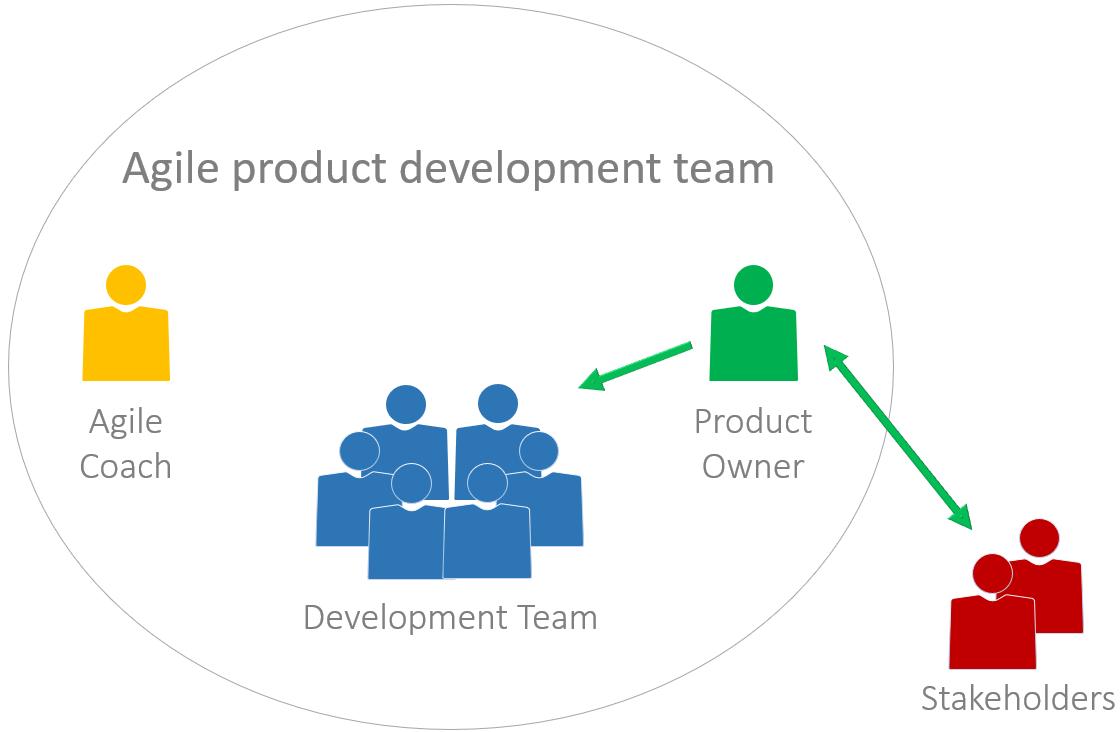
It quickly becomes clear why this role is necessary: Most agile teams are working with innovative solutions. They often bear complete responsibility for “their” product, from development to further enhancement and maintenance all the way to its replacement someday. Naturally, the team needs one person to take responsibility for ensuring that this work is headed in the right direction from the start. This person can be the Product Owner.
Special Download: Agile, Traditional or Hybrid Project Management? (PDF file)
Please fill in the form.
* Required Fields | Data Protection
What Does a Product Owner Do?
The person in the role of Product Owner ensures that the product:
- Serves the market and offers solutions to address existing or newly awakened demand
- Retains its competitive standing or, better yet, is ahead of the competition
- Keeps the stakeholders – and especially the customers – happy at a reasonable amount of effort and cost without letting the requirements wish list become endless
- Provides solutions that are truly sensible and useful, at a reasonable amount of effort (applies to internal product development for other departments within the organization)
- Meets the requirements agreed upon by the stakeholders as soon as possible and the development team understands these requirements. Ideally, everyone involved should be able to identify with the solution.
- Can reach a stage of advanced development within the given timeframe, possibly incrementally in the form of agreed intermediate results.
- Delivers quick wins to ensure the necessary liquidity for further development.
- Fulfills internal and external expectations regarding quality.
Find out about 3 Jira Tips for Product Owners.
What Are the Product Owner’s Exact Responsibilities?
In the contrary, open-ended triangle of the agile environment, it is the Product Owner who bears primary responsibility for balancing and prioritizing the scope, cost, and timing of the product.
Together with the implementation team, the Product Owner is also responsible for making sure that the quality requirements are met. Some of the triangle models consider this as an additional dimension to be considered.
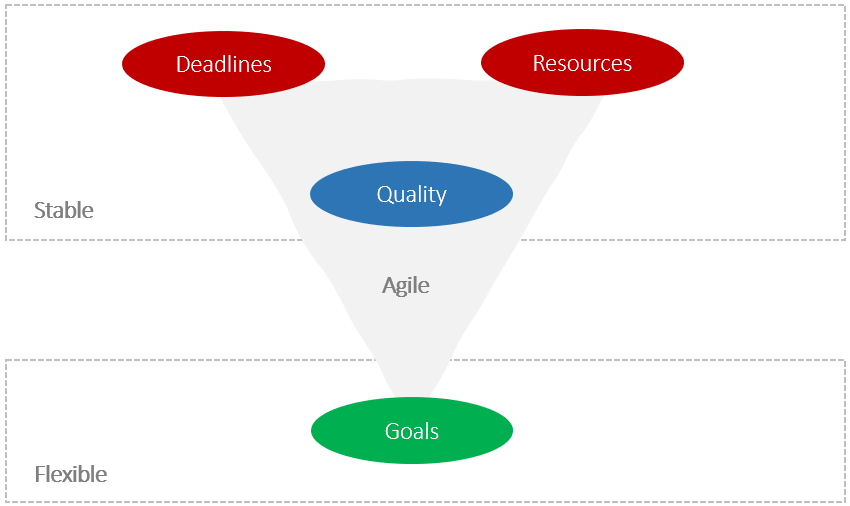
Reading tip: Before starting a project a role clarification workshop can help.
We can therefore say that Product Owners handle many of the duties traditionally handled by project managers.
However, project managers are also responsible for creating the project team, assigning tasks to the project team members, and monitoring their work. They can also be involved in initiating the project, for instance in selecting the projects or doing feasibility studies.
It’s generally different for Product Owners:
- Solution-oriented product perspective
- Agile Product Owners take care of a solution-oriented product perspective along the entire life cycle of their product. They think about their product and its users, including operational processes after initial development. In doing so, they detach themselves from pure project thinking.
- Initial backlog
- An early task of the Product Owner is typically the creation of an initial backlog (the list of all requirements for the product) together with the stakeholders – and possibly the development team or representatives thereof.
- Detailed implementation of the product
- The undertaking has already been decided e.g. by product management, which in an agile context usually has a superordinate portfolio perspective. The Product Owner, on the other hand, is dedicated to the implementation of a product in detail.
- Support from agile coaches
- Team development, conflicts, process design and rules for cooperation are the business of agile coaches (in Scrum: Scrum Master). They also help Product Owners with their tasks, so that they always have support when needed.
- Consultation / Coordination with the development team
- The self-organized development team is responsible for the distribution of tasks. It also takes over the responsibility for quality in the iterations to a large extent. However, the team often has to coordinate with the Product Owner to ensure that it does not deviate from goals, requirements and market realities.
- Joint responsibility with the development team
- Instead of reporting, the developers show where they stand with regular demonstrations of their work results (e.g. new functions in the product). At the product review for stakeholders, at the end of the iteration, the Product Owner and development team do this again together for everyone outside the agile product team. Together they take responsibility for their own results.
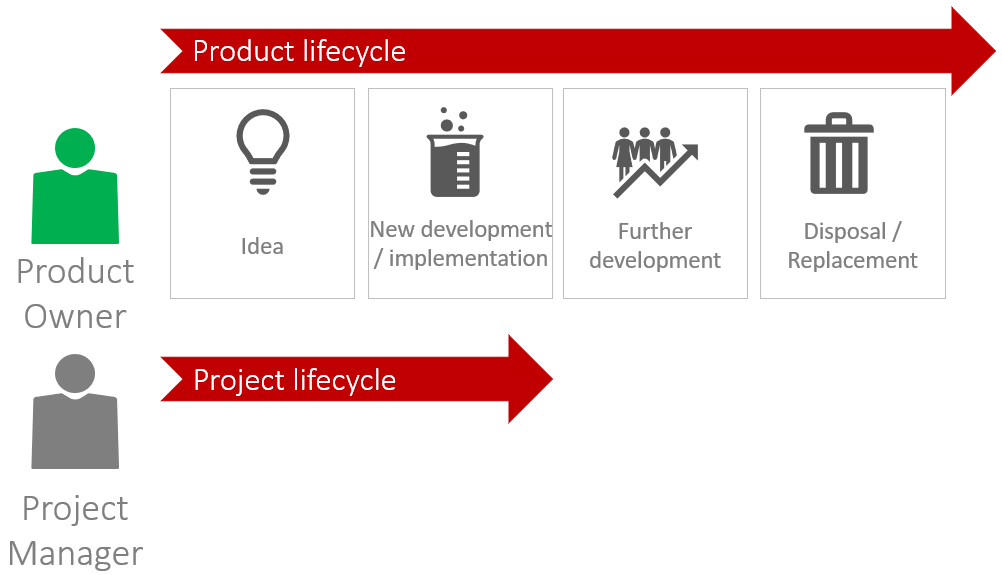
Another interesting read: Agile Project Management Certifications – A Comparison
What Skills and Expertise Must a Product Owner Have?
A Product Owner’s key responsibility is to evaluate and balance various factors such as:
- The cost, profitability, and financial return of the product development customer satisfaction and marketability
- The often endless list of stakeholder wishes and requirements the capacity and capabilities of the development team
- The team’s productivity (output) the quality and benefit of the results (outcome)
- Proactive measures (risk analysis, development of new features, integration) reactive measures (tests, bug fixes, quality control, maintenance)
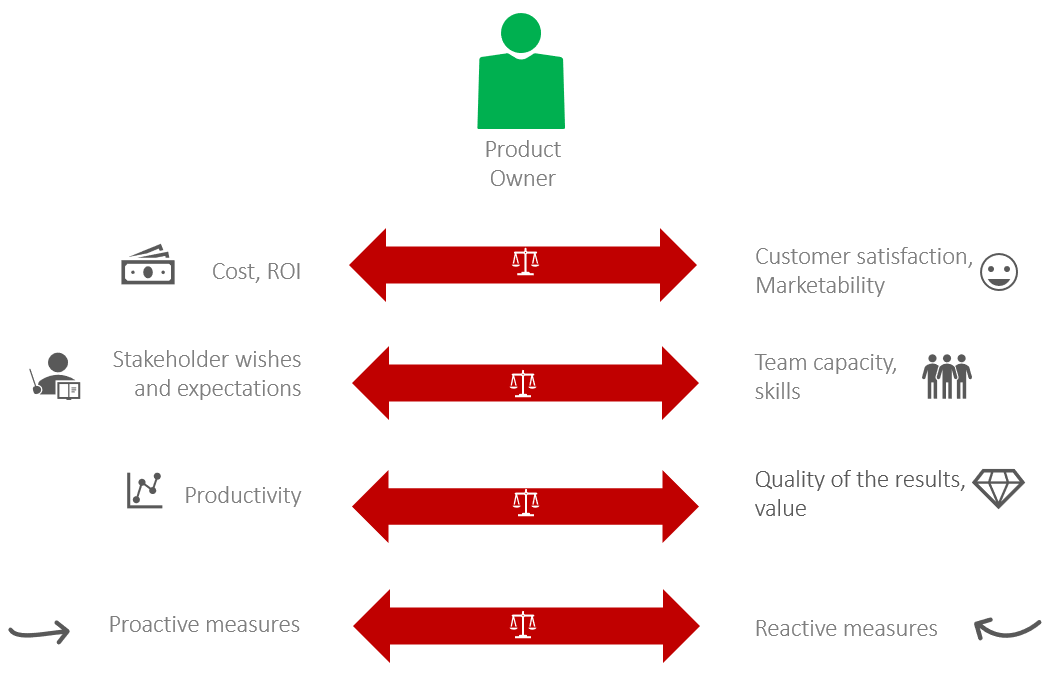
Ideally, the Product Owner can strike a good balance between these often divergent factors. This is not an easy task, however. To truly understand these factors, the person in this role should possess and use the knowledge and skills demanded of project managers.
These include the following knowledge and skills:
- Profitability calculations
- The ability to ensure that the solution developed provides the expected benefit (benefit engineering)
- Risk analysis methods
- Requirements analysis and prioritization techniques for managing the product backlog
- Stakeholder analysis and a talent for dealing with these people
- Confident manner and good negotiation skills
- An awareness of innovation
- People skills, also in dealing with the development team
The Product Owner must have more skills than just what the Scrum Guide demands of someone in that role.
Interested in this topic? Find out all you need to now about the Scrum Guide 2020.
What Are the Product Owner’s Duties?
The Product Owner’s key duties are:
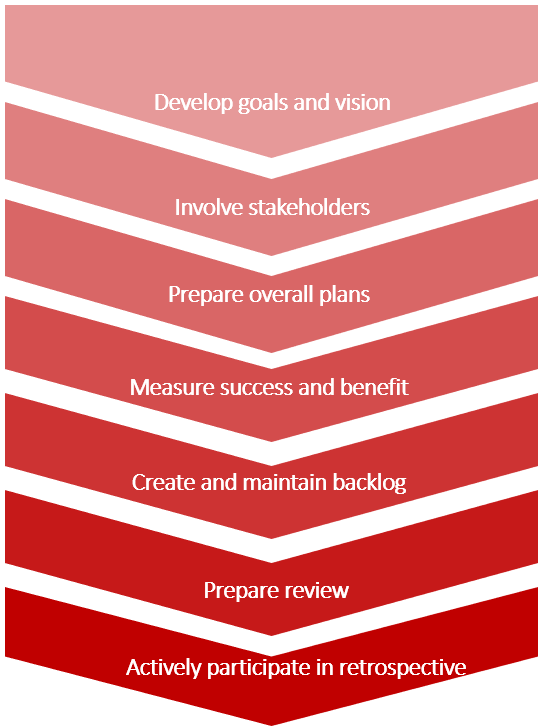
1) Set goals and define the vision
- Sets goals and pursue them
Product Owners must set the overall goals and track these over the long term. The developers, on the other hand, perform the technical work to achieve these goals, step by step. - Develop a vision for the product
The stakeholders collaborate with the development team to develop the product vision, which then guides the efforts going forward. (One example: The “BestDoc” app is a platform for finding a doctor, checking their ratings, and booking an appointment. It is used by people searching for the best doctors in their region. However, it can also be seen as a slogan or something inspiring or motivating.)
2) Involve the stakeholders early and often
To understand the stakeholders’ interests, the Product Owner must also understand the stakeholders themselves. It is the Product Owner’s duty to address these interests and, if necessary, filter them for the development team.
3) Handle the high-level planning
- Plan the iterations in advance
Prepare the content of the next 1-3 iterations in a timely manner, and present the overall plan for achieving these objectives to the team.
- Plan the release packages
Set the overall objectives and develop an efficient plan: for example, which functionality will go live and when.
4) Measure the success and benefit
Define metrics that can be used to reactively measure the product’s actual benefit and added value.
5) Create and maintain a product backlog
Always keep this overview up to date and refine it, or ensure that someone else creates it for the Product Owner.
6) Prepare the sprint reviews
Which key stakeholders will be invited, and what will they be shown? What feedback do you need from them? Which team members are available, and what functionality can they show in the demo?
7) Actively participate in the retrospective
What progress has our team made? Do we have the right tools and processes? How can we improve? The Product Owner as well as the team members pursue team-internal efforts to promote continuous improvement.
What Is Product Backlog Management?
The Scrum Guide provides information on this, saying that it involves the following:
“Product backlog management encompasses:
- Documenting all entries in the product backlog clearly and accurately
- Sorting the product backlog entries in a way that optimally advances the goals and objectives
- Optimizing the value of the work performed by the development team
- Ensuring that the product backlog is visible, transparent, clear to everyone, and shows what the Scrum Team will work on next
- Ensuring that the development team has the necessary understanding of the product backlog entries”
Of course, even this list from the Scrum Guide does not cover everything found in practice. However, it was not intended to be all-inclusive. A good Product Owner is someone who manages to handle requirements engineering in an agile context.
Refining the product backlog involves activities such as:
- Making decisions about the contents of the backlog
- What should be written in the backlog and what not? Being able to say “no” to stakeholders about requests that are inappropriate or unrealistic at this stage. A company must respect the decisions of the Product Owner, even if it is sometimes difficult. This also includes: adding new entries as soon as it is necessary and deleting those that have become superfluous.
- Making decisions about the types of entries
- Functional descriptions, specifications, bug fixes, non-functional requirements such as security, scalability, maintainability? Or the result-oriented solution description from the customer’s point of view (user stories) in one short sentence? The mixture makes sense, since none of these entry types fully meets all the requirements of a product.
- Making decisions about requirements and timing
- What are the requirements for which iteration and release? Specifically, this is the responsibility of the whole team in iteration planning. Most stakeholders also want to have a say in this. A user story map can be helpful.
- Preparing cost estimates
- Obtaining rough, relative effort estimates with story points or similar by the team. Because at the product backlog level, requirements are formulated primarily from the user’s perspective. The breaking down into tasks is only done in the iteration planning. The tasks then go into the iteration backlog.
- Prioritizing the entries
- Normally this is simply a linear list in the product backlog. This means that the priority results from the order: Things that are high up in the list must be implemented earlier than entries further down.
Our tip: Focus only on the backlog’s top entries when formulating and evaluating the entries. The entries at the bottom of the list are less important because these can still change or be omitted entirely.
This strategy, aligned with the “Just-in-Time” principle, helps you avoid wasting energy on requirements that aren’t immediate. It uses the DEEP criteria. This helps you ensure that when working with product backlogs, you follow agile principles and not simply waterfall planning under a new name.
Our tip: If using a flat, linear strategy to prioritize the backlog entries is not sufficient, you can also use User Story Mapping for multidimensional backlog management.
What Metrics Are Used to Measure the Value of the Benefits Provided by the Product?
This, or something similar, is a favorite question in Product Owner certification exams such as Scrum.org. Initially, it looks like a difficult question. How can we, as a team, measure our product’s value? Certainly not solely based on our productivity. It can be high, but if the results are wrong, it’s not helpful.
However, “Evidence-based management” defines several metrics, some of which are still not that well known. Product Owners may find these quite helpful though.
Evidence-based management recognizes four main categories for the individual metrics:
- Current Value
Measures how well the product is accepted and used by the market. It also takes into account the morale of the team developing it. How satisfied are the potential investors?
Sample metrics: this category includes, for example, customer satisfaction indexes (such as those provided by surveys and product feedback), measurements indicating the relationship between the usefulness of individual functions and how satisfied customers are with these particular functions.
- Time-to-Market
This metric indicates how long it takes from the moment a new requirement is initially formulated until the originator receives the solution. How fast are we able to process new information and make use of it?
Sample metrics: release frequency, integration frequency, processing times for backlog entries, and lead time. - Ability to Innovate
This metric indicates how innovative the process for finding a solution is. How innovative is the product and its functionality? This question should also be asked when further developing a mature system in a large enterprise.
Sample metrics: benefits of the individual functions in comparison to others, effort or expense of new developments (as a percentage) relative to activities such as maintenance, and amount of time the team is actually spending on the product (as compared to other tasks). - Unrealized Value
This metric considers the (as yet) unrealized potential. Is it worth taking a closer look at this?
Sample metrics: market share, user expectations vs. what users have received
Our tip: These metrics are most helpful when they are tracked over a longer period of time because then the developments and trends are more visible.
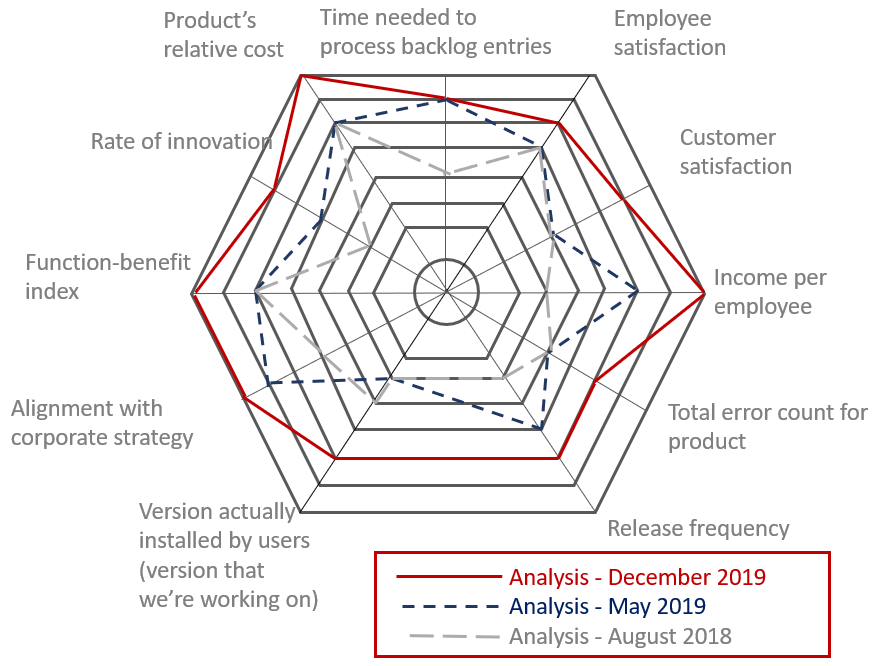
What Challenges Is the Product Owner Expected to Overcome?
So far, we have taken a close look at the role of Product Owner and a few of the key tools and tasks. Now you will learn about the challenges Product Owners face in their daily work.
Surveys of Product Owners and developers conducted by agile coaches have shown that the main challenges they face are these:
- Time pressure faced by Product Owners
- Possible problems: the role may not be filled out full-time, but must still be done alongside line work. Too many products and teams have to be managed at the same time. The balance between time for stakeholders and time for the teams is difficult.
Potential solution: cause analysis: what is really the reason for the time problems? What can be changed? Are there time management methods that could help? Maybe a reprioritization of projects and requirements would help? - Lack of knowledge about the tasks
- Possible problems: the Product Owner knows too little about his own role and agile development. The role is often simply assigned without further explanation or training.
Possible solution: further education, literature such as the highly recommended book “Product Owner: Leveraging Scrum as a Competitive Advantage” by Don McGreal and Ralph Jocham. - Lack of tool expertise
- Possible problems: the Product Owner does not know necessary / important documents and metrics for his work.
Possible solution: discussion of tools for creating product visions, impact, story and roadmaps, release planning strategies, evidence-based management, stakeholder analysis tools - Lack of decision-making power
- Possible problems: the Product Owner is not authorized to decide. Escalation paths are too complicated and lengthy.
Possible solution: escalation and discussion of such problems on meta level with the management - Problems involving stakeholders
- Possible problems: lack of stakeholder participation and interest, conflicts among stakeholders regarding priority setting, too many stakeholders.
Possible solution: stakeholder analysis, learn and apply moderation techniques, requirements analysis together with stakeholders, e.g. with a product vision canvas, involvement of agile coaches. - Problems with the organizational structure
- Possible problems: high organizational complexity and silo symptoms
Possible solution: shorten feedback loops with the help of agile coaches - Overly complex projects
- Possible problems: projects with many different companies as participants. The Product Owner and the developers belong to different companies.
Possible solution: this does not necessarily have to be a problem, but it is a topic that should be dealt with consciously: Contract design and team agreements help. - Highly-regulated environments
- Possible problems: the environment / industry makes light-weight working methods difficult due to process superstructure.
Possible solution: situational intelligence and concentration on a good error culture and learning as fast as possible in the face of external circumstances.
Products owners cannot ‒ and should not be expected to ‒ solve all these problems alone. Doing so generally requires the participation of management and everyone involved as well as good coaching.
Our tip: If you have encountered any of these problems in your organization, it is a good idea to address these issues as quickly as possible by reporting them to the responsible person or office.
Conclusion – What Is a Product Owner and What Is Their Role in an Agile Team
In this article, you have read about:
- Product Owner duties
- Challenges the Product Owner is expected to overcome
- Metrics for measuring a product’s benefits
- What product backlog management encompasses
To summarize, a good Product Owner can make a valuable contribution to the company’s success in the market. This person has a very exciting and influential position offering numerous opportunities. However, the person in this role may also face difficult challenges.
If you are (or wish to be) a Product Owner, get ready for continuous learning involving methodologies, tools, and especially human interaction.
Does this sound appealing?
If yes, then go ahead and explore the use of agile methods in your team and with your projects. If you would like to learn more and expand your knowledge, consider taking professional development courses to become a Professional Scrum Master (PSM I) or PMI Agile Certified Practitioner (PMI-ACP).
Our final tips
Get to know the individually adaptable “PPM Paradise” – the optimal environment for your enterprise-wide project, program, portfolio and resource management. Download the eBook now (just click, no form).
And sign up for our bi-weekly blog newsletter to make sure you receive all our updates.
Are agile methods suitable for your work environment? We look forward to your feedback, please leave us a comment.
Subscribe to TPG BlogInfo: Never miss new practice-oriented tips & tricks
Every other week: Receive practical tips in TPG blog posts written by recognized experts in project, portfolio, and resource management.
* Required Fields | Data Protection
Author: Antje Lehmann-Benz (PMP, PMI-ACP, PSM expert / instructor in Agile Methodology)
Antje Lehmann-Benz, PMP, is a project management instructor with a special focus on agile issues and Scrum seminars. She also has experience in providing software training (JIRA and Confluence) and consulting. In addition to instructing on frameworks and theory, she is also experienced in the use of agile games and practical exercises to reinforce the knowledge gained.
Read more about Antje Lehmann-Benz on LinkedIn.







